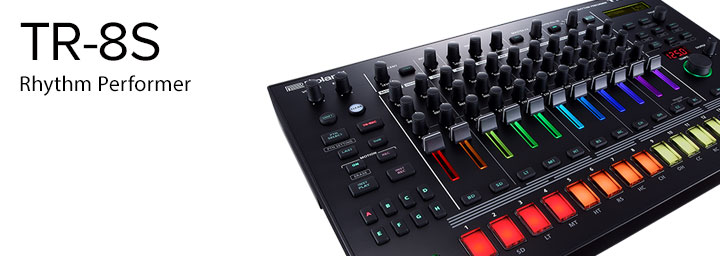Let’s take a look at some of the many ways to edit Individual Instruments in the TR-8S.
Before starting to edit a Kit, it’s a good idea to copy it to an empty Kit number, and work with the copy, rather than the original, so you don’t make changes to other Patterns that may use the same Kit. For a refresher on how to copy Kits, take a look at the article in this series called Copy a Pattern, Kit or Variation.
You may want to press the INST Play Button before starting to Edit. That way you avoid recording any unintended Steps in your Pattern, and you’re able to play the Instruments on the Pads [1-11], as well as the INST Pad, while doing your edits.
To Edit an Instrument:
- Press the Instrument Select Button of the Instrument you want to Edit.
- Hold Shift and press the INST Button to view the INST Edit screen.
- Turn the Value Knob to select the desired Parameter and press Enter.
- Turn the Value Knob to adjust the Parameter value and press Enter.
- Repeat steps 1, 3 and 4 for all Parameters you wish to edit.
Here are some suggestions of Instrument Edits to experiment with to get started:
The TR-8S Toms Tones created using ACB (Analog Circuit Behavior), the 606, 707, 808, and 909 sounds, have a Color Parameter that, depending on the sample, controls the amount of Ambience, Resonance, or Pitch Change.
The ACB Bass Drum Tones have an Attack Parameter, and the ACB Snare Drum Tones have a Snappy Parameter. These Parameters behave in a manner similar to their equivalents on the classic Roland drum machines on which the ACB Tones are based.
Filter Cutoff and Resonance can dramatically change the tone of a drum sound, try adjusting them on the Snare or Claps. Be careful with the Resonance though, at certain settings it can be pretty brutal, especially if you’re listening at higher volumes, or on headphones!
Try adjusting the Rate Parameter to somewhere between +1.00 and +0.50, then adjust the tuning to taste with the Tune Knob or the Coarse Parameter, then adjust Filter Cutoff and Resonance, then try the Spread Parameter for a bit of Stereo effect.
Try setting the CTRL Knob to InstFX, on for example a Track playing some Congas, and set the InstFX on that Instrument to LPF/HPF. Then turn the CTRL Knob on that Track to adjust the filter as the Pattern plays. For a refresher on how to assign Parameters to the CTLR Knobs, take a quick look at the article in this series called Assign and Automate the Control Knobs.
There are virtually endless combinations to be explored when you start editing multiple Instrument Parameters on a given Instrument. Especially considering you can then adjust any of those Parameters in real-time as the Pattern plays!
For any of the Instrument Parameters that can be modified by the LFO, you can have them adjust in a rhythmic way in sync with the Pattern Tempo. For more details on using the LFO, take a look at the article in this series called Create Movement with the LFO.
PRO TIP
To give your snare a bit of extra life, try assigning the SN Track CTRL Knob to InstFX, then set the Snare Instrument FX Type to Drive. Set the Drive Parameter to 195 or so, then adjust the SN Track CTRL and Decay Knobs as the Pattern plays.Article written by Alex Marlowe
 Alex Marlowe is a Composer/Producer, Musician and Consultant based in Melbourne, Australia. Alex has placed music in numerous movies and TV shows, and toured worldwide as a keyboardist with major artists. As a Teacher and Consultant, Alex has worked with platinum songwriters, music editors, producers and composers, and conducted courses in Music Production and Music Software, including at the Songwriting School of Los Angeles. You can find more info, and contact Alex at: www.logicproanswers.com
Alex Marlowe is a Composer/Producer, Musician and Consultant based in Melbourne, Australia. Alex has placed music in numerous movies and TV shows, and toured worldwide as a keyboardist with major artists. As a Teacher and Consultant, Alex has worked with platinum songwriters, music editors, producers and composers, and conducted courses in Music Production and Music Software, including at the Songwriting School of Los Angeles. You can find more info, and contact Alex at: www.logicproanswers.com

